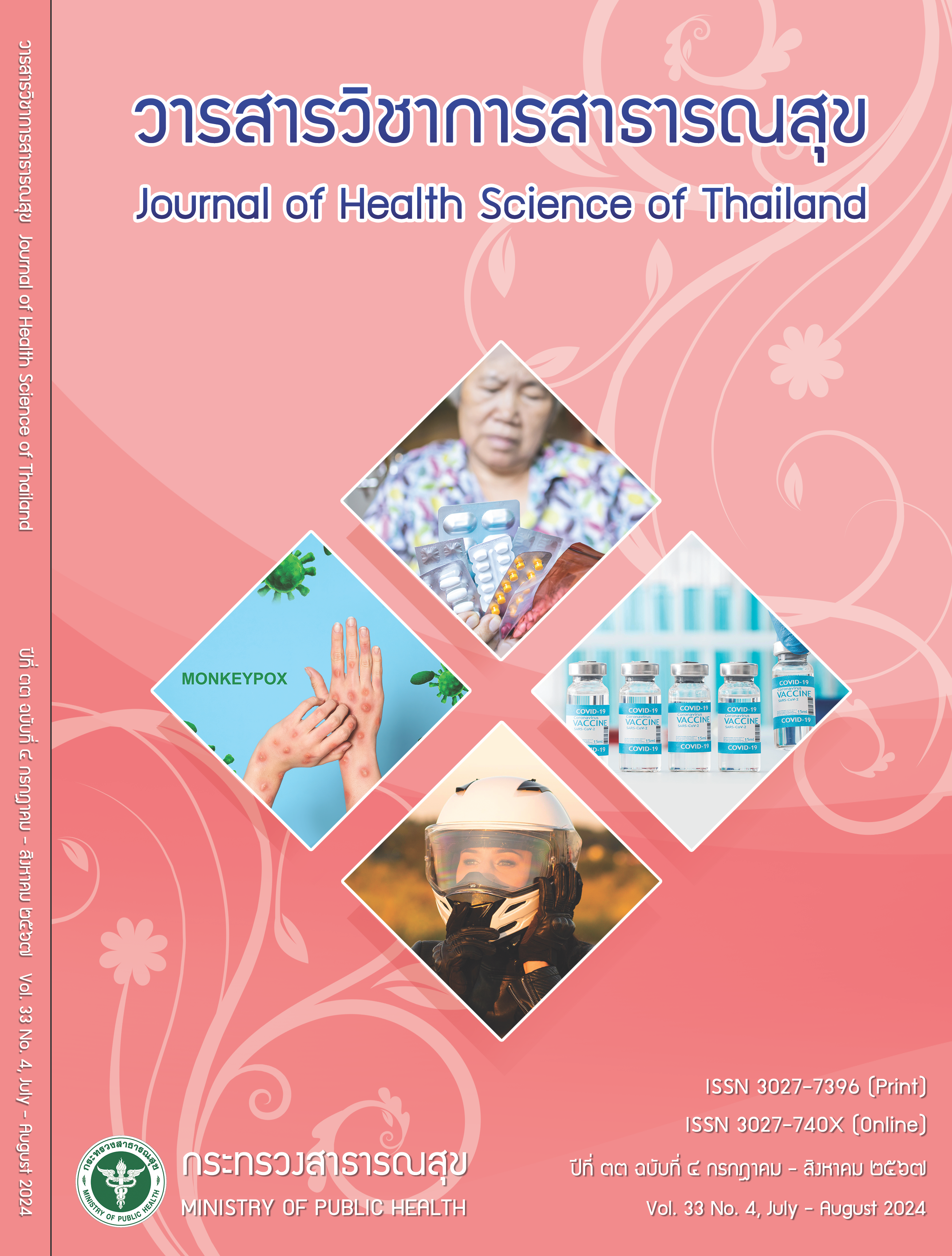Effectiveness of Sensory Retraining Combines Occupational Therapy on Upper Extremity Rehabilitation in Stroke
Keywords:
stroke survivors, occupational therapy, sensory retaining, functional sensory discriminationAbstract
This study is an experimental study. The objective was to study the effectiveness of sensory retraining in combination with occupational therapy (OT) on upper limb rehabilitation in stroke patients. The author conducted a randomized controlled trial divided into two groups (control group and experimental group) Fifty-eight participants were assigned to control group (N=29) and experimental group (N=29). Both groups received frequency rehabilitation three times a week for six consecutive weeks for a total of 18 sessions, with the experimental group receiving 30 minutes of occupational therapy rehabilitation, followed by 30 minutes of sensory retraining for a total of 60 minutes, and the control group receiving 60 minutes of occupational therapy rehabilitation. The assessments consisted of (1) the functional Tactile Object Recognition, (2) Fugl-Meyer Assessment of Physical Performance (Upper Extremity Motor), and (3) Sensory Assessment, with a total of two measurements: before and after the end of the last rehabilitation. The study found that upper limb rehabilitation in stroke patients using sensory retraining techniques combined with general occupational therapy rehabilitation was more effective in increasing sensory ability through object recognition from physical senses and sensations in the arms and hands than conventional occupational therapy rehabilitation alone. On the ability to control the movement of the upper limbs, the score changes increase. The results of the study concluded that sensory retraining combined with general occupational therapy rehabilitation is a technique that can effectively improve the sensory ability of the weak arm and hand.
Downloads
References
กองโรคไม่ติดต่อ. จำนวนและอัตราตายโรคไม่ติดต่อ ปี 2559 - 2561 (รวม 4 โรคความดันโลหิตสููง เบาหวาน, หัวใจขาดเลือด หลอดเลือดสมอง หลอดลมอักเสบ, ถุงลมโป่งพอง) [อินเทอร์เน็ต]. 2562 [สืบค้นเมื่อ 24 ก.ย 2562]. แหล่งข้้อมูล: http://www.thaincd.com/2016/mission/ documents-detail.php?id=13653&tid=32&gid=1-020
ราตรี สุดทรวง, วีระชัย สิงหนิยม. ประสาทสรีรวิทยา. กรุงเทพมหานคร: จุฬาลงกรณ์มหาวิทยาลัย; 2545.
Carey L, Macdonell R, Matyas TA. SENSe: Study of the effectiveness of
neurorehabilitation on sensation: A ran¬domized controlled trial. Neurorehabil Neural Repair 2011;25(4):304-13.
Carlsson H, Rosén B, Pessah-Rasmussen H, Björkman A, Brogårdh C. SENSory re-learning of the UPPer limb after stroke (SENSUPP): Study protocol for a pilot ran-domized controlled trial. Trials 2018;19(1):1-8.
Jacqueline L. The Gale encyclopedia of nursing and allied health. 2nd ed. Detroit: Thomson Gale; 2006.
O’Sullivan SB. Examination of motor function. In: O’Sullivan SB, Schmitz TJ, editors. Physical rehabilita¬tion: assessment and treatment. 2nd ed. Philadelphia: FA Davis; 2007. p. 227-36.
Bernard R. Fundamentals of biostatistics. 5th ed. Duxbery:Thaomson Learning; 2000.
Yekutiel M, Guttman E. A controlled trial of the retraining of the sensory function of the hand in stroke patients. Journal of Neurology, Neurosurgery, and Psychiatry 1993;56(3):241-4.
Abela E, Missimer JH, Pastore-Wapp M, Krammer W, Wiest R, Weder BJ. Early prediction of long-term tactile object recognition performance after sensorimotor stroke. Cortex 2019;115:264-79.
Downloads
Published
How to Cite
Issue
Section
License
Copyright (c) 2024 Ministry of Public Health

This work is licensed under a Creative Commons Attribution-NonCommercial-NoDerivatives 4.0 International License.





